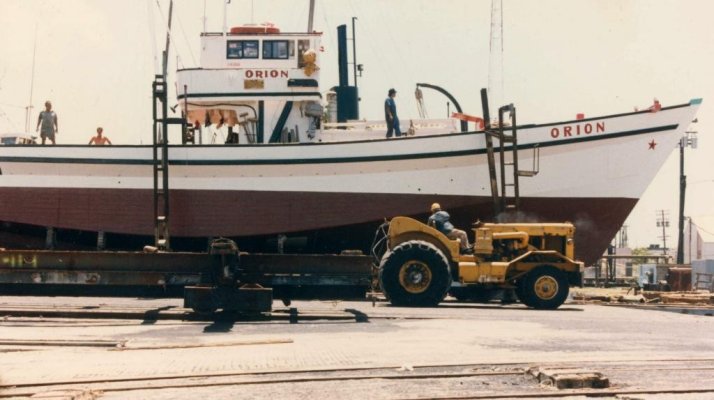With regards to the rolling motion differences, John gave a pretty good summary. A semi-planing (the term I prefer over semi-displacement) hull with it's relatively flat after-section and sharp chines has more surface to resist rolling but this results in a fairly sharp "snap-back" at the end of each roll. A displacement hull will generally roll farther but the direction change at the end of each roll will be more gradual. The roll eases to s stop and the eases back into the roll in the opposite direction.
I know people who get seasick in a big hurry in the longer-easier type of roll as the boat sort of wallows from side to side. And I know people who are very uncomfortable or who get sick in the snappier albeit not as far over roll typical of the hard-chined semi-planing hull.
So it's a matter of personal preference. What you might want to do if it's practical is to either charter or bum rides on boats with each type of hull on a day that's a bit lumpy and see for yourself which you prefer. Or which you dislike less, which might be the more accurate observation
As to the suitability of either hull for "blue water" cruising, there is not necessarily a hard and fast rule about that, either. Just about the time you have settled on the "hard-chine, semi-planing hull equals coastal cruising, round-bottom displacement hull equals blue-water cruising" rule, you visit New England and the Canadian maritimes and take a look at the bottoms of the lobsterboats that are hauled out of the water. The folks who run these boats go out in sea conditions that would keep most recreational boaters cowering in terror in their basements, and their boats are...... semi-planing hulls.
The attached photos are of a pair of very "blue water" boats.* Both have very flat after sections and hard-chine hulls. The lobster boat (this particular one was was brand new) have these hull-shapes because in addition to reducing the amount of roll which makes life a little easier for the guys working the pots on deck, they also need to get back to port as quickly as possible with their live catch and also to get the best price.* So these boats truly do make use of the semi-planing (or with enough power fully-planing) ability of their hulls.
The 1960s or 70s photo of the Hawaiian "aku boat" (aku is the Hawaiian name for albacore tuna), a boat I was around all the time during the near 30 years I lived in Hawaii, shows the typical hull form for these locally built boats. They fished every day year round in some of the roughest waters in the world including the infamous Molokai Channel. While the photo cuts off the stern, the sharp chine and flat underbody carries back all the way to the transom where the cross-section is remarkably similar the lobster boat in the other photos.* Very shallow draft in the afterbody, very flat bottom. Both these types of boats have these hull-forms for very specific reasons, most of them having nothing to do with trying to give the crew a comfortable ride. But it does go to show that a "hard and fast" rule is not always so "hard and fast."
And since you will be cruising for pleasure, as opposed to using your boat to make the house payment and keep your family fed, you won't have to go out when the weather's crappy., So the semi-planing type of hull will probably work just fine for you if that's the kind of boat you decide best meets your needs. And, if you find you prefer of a displacement hull, it will work just fine for you, too.



